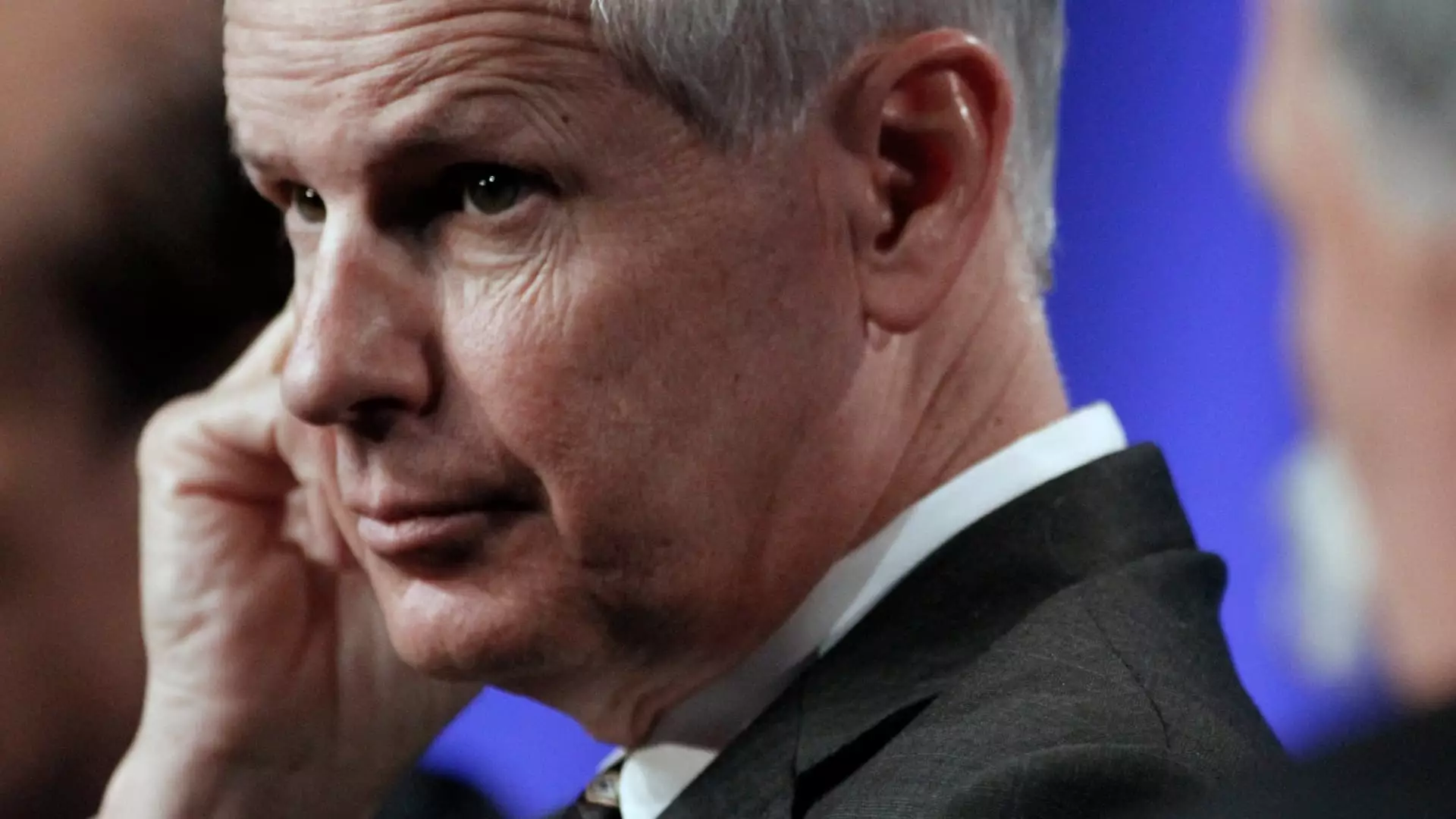The pay-TV landscape has undergone significant transformations in recent years, with traditional satellite providers like Dish Network and DirecTV facing increasing competition from streaming services. In light of these changes, Charlie Ergen, the founder of EchoStar, is nearing a crucial decision—selling Dish Network to DirecTV. This possible merger, which has been long speculated since its initial attempt in 2002, aims to address EchoStar’s mounting financial difficulties and staggering debt, portraying a complex picture for both companies involved.
The urgency of the negotiations is underscored by EchoStar’s impending debt maturity of $1.98 billion slated for November. The company’s financial state, as publicly disclosed, reveals a mere $521 million in cash reserves, coupled with forecasted negative cash flows extending through 2024. These troubling figures raise questions about the viability of EchoStar as a standalone entity and highlight the pressure driving the potential sale. This scenario becomes increasingly precarious as bankruptcy looms, reshaping the future of one of the pay-TV industry’s pioneering players.
Dish Network has historically operated within a market landscape characterized by immense competition from both satellite and cable providers. However, the rise of streaming platforms has substantially disrupted the status quo, leading to substantial subscriber losses. As of their last quarter, Dish reported 6.1 million satellite subscribers and an additional 2 million for its streaming service Sling TV. Comparably, DirecTV has suffered significant setbacks since its acquisition by AT&T in 2015, which was marred by debt-related issues, diminishing their subscriber count from approximately 15.4 million to around 11 million.
Despite these challenges, both companies aim to innovate and adapt. DirecTV is actively working to reinforce its streaming portfolio, attempting to dispel misconceptions that its services are exclusively satellite-based. Recent reports indicate a modest growth in streaming subscribers, with more than 20,000 new customers acquired earlier this year. However, the bulk of their customer base continues to rely on the traditional satellite model, which may soon become a relic of the past if current trends continue.
The potential merger of Dish Network and DirecTV is fraught with regulatory hurdles, similar to those that derailed prospective negotiations in the past. Having faced scrutiny in 2002 due to fears of monopolistic practices, this current situation necessitates a careful consideration of anti-competitive concerns. The Federal Communications Commission (FCC) and other regulatory bodies may take additional time to scrutinize the deal, given the rapidly evolving media landscape and the significant implications for consumers.
Moreover, structuring the deal as an all-cash transaction raises questions about the financial strategies employed by DirecTV and EchoStar. The proposed merger, reportedly valued at over $9 billion, could provide Dish with the capital necessary to alleviate its financial strain. However, the intricacies of unwinding EchoStar’s liabilities and aligning with DirecTV’s future goals pose significant risks if consumer preferences continue to pivot toward subscription-based streaming offerings.
As the pay-TV sector navigates these financial and regulatory complexities, the implications of a potential Dish-DirecTV union extend beyond mere numbers. It signifies a broader struggle for revenue and relevance within the increasingly competitive entertainment ecosystem. If the deal proceeds, EchoStar and DirecTV must pivot their strategies to not only retain existing subscribers but also to attract new ones by offering innovative, cost-effective packages that meet the changing demands of today’s consumers.
The future of satellite television hangs in the balance. With rising customer expectations and an ever-evolving technological landscape, merely merging operations may not suffice to overcome ongoing challenges. The industry must consider an adaptive approach that prioritizes customer satisfaction while embracing integration with contemporary viewing behaviors, particularly those inclined toward on-demand and mobile-accessible content.
The potential merger of Dish Network and DirecTV encapsulates the chaotic, often tumultuous chapter of the pay-TV industry. With critical deadlines looming and pressing financial realities facing both companies, this moment may represent a decisive turning point—either solidifying their position in the market or pushing them closer to uncertain waters of bankruptcy and irrelevance.

